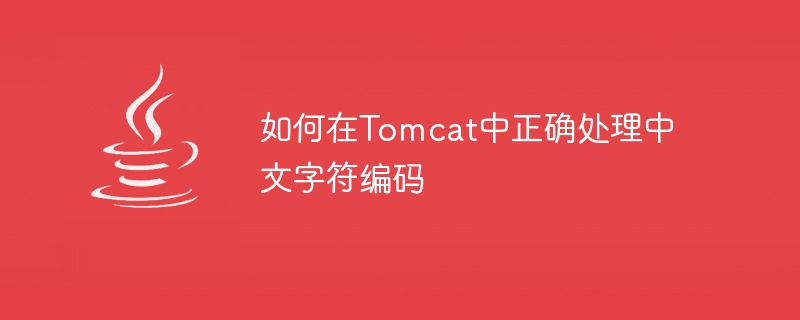Home >Java >javaTutorial >How to correctly handle Chinese character encoding in Tomcat
How to correctly handle Chinese character encoding in Tomcat
- 王林Original
- 2023-12-28 13:20:491022browse

How to correctly handle Chinese character encoding in Tomcat
In the process of web development, we often encounter the problem of handling Chinese character encoding. As a commonly used Java Web server, Tomcat also has some things to pay attention to when dealing with Chinese character encoding. This article will introduce how to correctly handle Chinese character encoding in Tomcat and provide corresponding code examples.
1. Understanding character encoding
First of all, we need to understand the concept of character encoding. Character encoding is a way of mapping characters into binary data. Common character encodings include UTF-8, GBK, ISO-8859-1, etc.
Among them, UTF-8 is a variable-length Unicode encoding method that can represent all characters in the world. GBK is China's Chinese character set encoding method, which is expanded on the basis of GB2312. ISO-8859-1 is a Latin alphabet encoding.
2. Tomcat default character encoding
Tomcat uses ISO-8859-1 character encoding by default, which may cause garbled characters when processing Chinese characters. In order to correctly handle Chinese character encoding, we need to configure Tomcat accordingly.
3. Configure Tomcat’s character encoding
- Modify the server.xml file
Open the conf/server.xml file in the Tomcat installation directory, and Add the following content to the
<Connector ... URIEncoding="UTF-8" />
- Modify the web.xml file
Open the WEB-INF/web.xml file, in 4. Use the correct character encoding In the specific code, we need to ensure that the correct character encoding is used. Add the following code at the head of the JSP file: The above code sets the character encoding of both the request and response to UTF-8. When processing database operations, you also need to ensure that the character encoding of the database is consistent with that of Tomcat. 5. Summary By configuring Tomcat accordingly, we can correctly handle Chinese character encoding and avoid garbled characters. At the same time, in the specific code, we also need to pay attention to using the correct character encoding. In this way, we can correctly handle Chinese character encoding in Tomcat. The above are some introductions and code examples on how to correctly handle Chinese character encoding in Tomcat. I hope to be helpful! <filter>
<filter-name>encodingFilter</filter-name>
<filter-class>org.apache.catalina.filters.SetCharacterEncodingFilter</filter-class>
<init-param>
<param-name>encoding</param-name>
<param-value>UTF-8</param-value>
</init-param>
<init-param>
<param-name>ignore</param-name>
<param-value>true</param-value>
</init-param>
</filter>
<filter-mapping>
<filter-name>encodingFilter</filter-name>
<url-pattern>/*</url-pattern>
</filter-mapping><%@ page contentType="text/html; charset=UTF-8" %>
request.setCharacterEncoding("UTF-8");
response.setContentType("text/html;charset=UTF-8");
The above is the detailed content of How to correctly handle Chinese character encoding in Tomcat. For more information, please follow other related articles on the PHP Chinese website!

